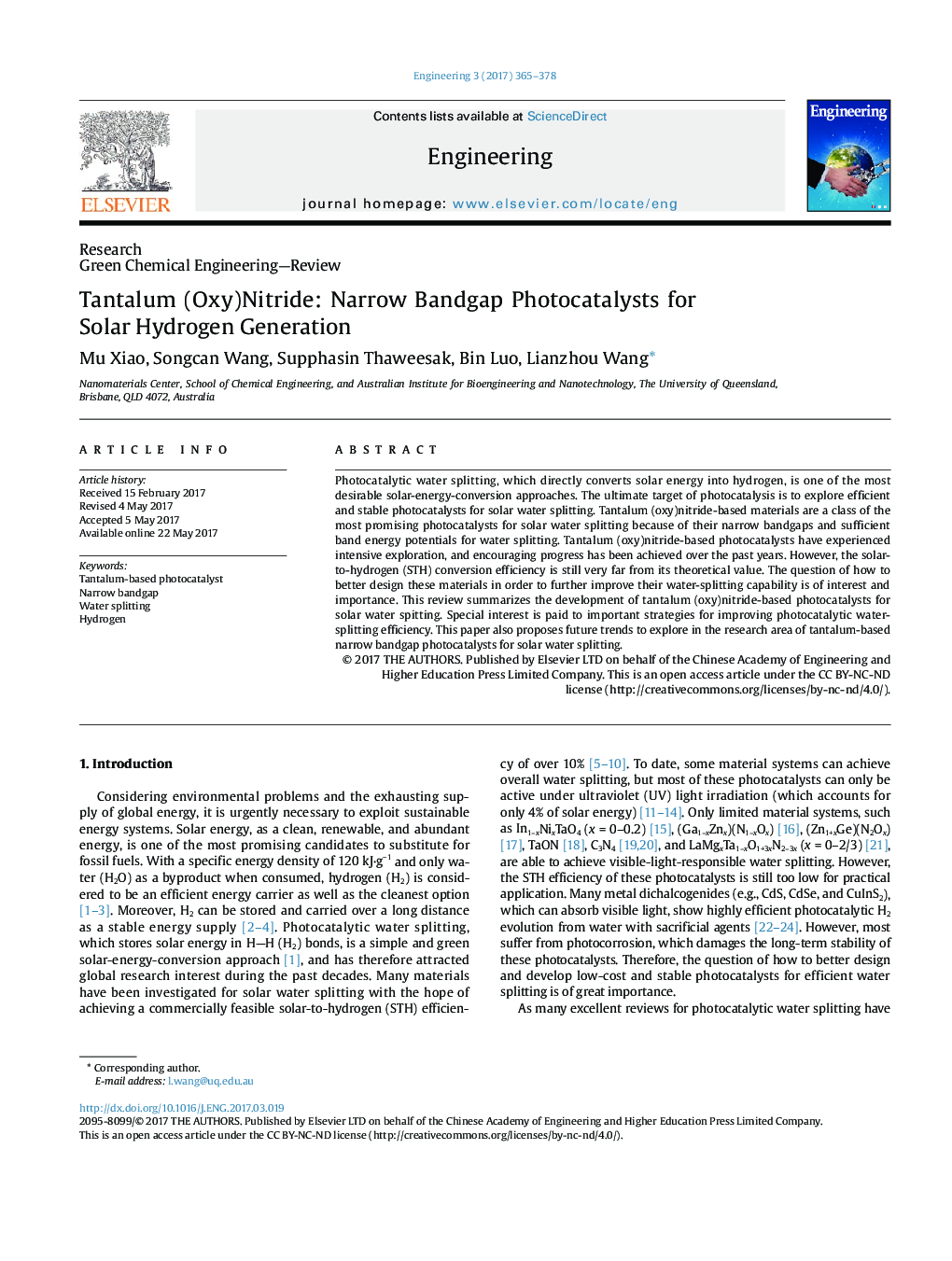| Article ID | Journal | Published Year | Pages | File Type |
|---|---|---|---|---|
| 6893530 | Engineering | 2017 | 14 Pages |
Abstract
Photocatalytic water splitting, which directly converts solar energy into hydrogen, is one of the most desirable solar-energy-conversion approaches. The ultimate target of photocatalysis is to explore efficient and stable photocatalysts for solar water splitting. Tantalum (oxy)nitride-based materials are a class of the most promising photocatalysts for solar water splitting because of their narrow bandgaps and sufficient band energy potentials for water splitting. Tantalum (oxy)nitride-based photocatalysts have experienced intensive exploration, and encouraging progress has been achieved over the past years. However, the solar-to-hydrogen (STH) conversion efficiency is still very far from its theoretical value. The question of how to better design these materials in order to further improve their water-splitting capability is of interest and importance. This review summarizes the development of tantalum (oxy)nitride-based photocatalysts for solar water spitting. Special interest is paid to important strategies for improving photocatalytic water-splitting efficiency. This paper also proposes future trends to explore in the research area of tantalum-based narrow bandgap photocatalysts for solar water splitting.
Related Topics
Physical Sciences and Engineering
Computer Science
Computer Science (General)
Authors
Mu Xiao, Songcan Wang, Supphasin Thaweesak, Bin Luo, Lianzhou Wang,
